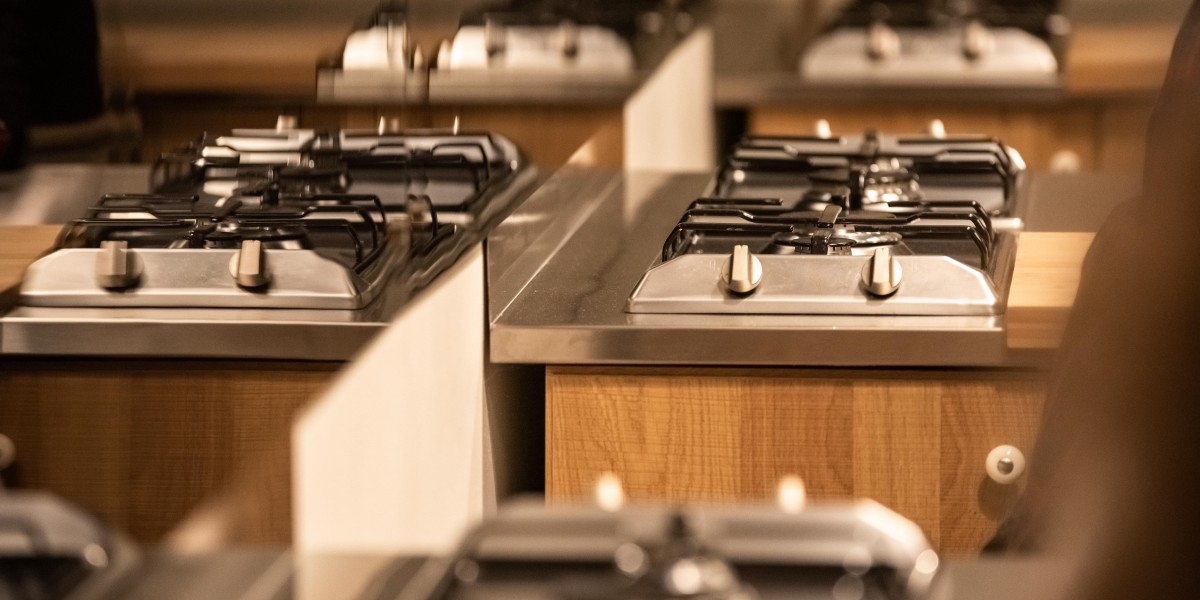Understanding Built-In Electric Ovens: A Comprehensive Guide
In the last few years, the kitchen has changed from simply a cooking space to a hub for household gatherings, entertaining guests, and delighting in quality time. Among the most essential components of modern-day culinary experiences is the kitchen oven. Built-in electric ovens have gotten enormous popularity, thanks to their space-saving designs, smooth aesthetics, and advanced features. This post supplies an in-depth exploration of built-in Haden 60cm Electric Built-In Oven with Fan Assist ovens, covering their types, advantages, setup factors to consider, maintenance tips, and a thorough FAQ area.
What Are Built-In Electric Ovens?
Built-in electric ovens are integrated cooking units developed to be set up directly into kitchen cabinets or walls. Unlike traditional freestanding ovens, built-in designs offer a seamless look, contributing to the general style of the kitchen space. They come geared up with different cooking functions, advanced innovation, and energy-efficient functions.

Kinds Of Built-In Electric Ovens
Built-in electric ovens come in different styles to fulfill diverse cooking needs and kitchen designs. Here are the most common types:
Single Ovens: Ideal for smaller kitchens, single ovens offer sufficient cooking space for daily meals without using up excessive room.
Double Ovens: For avid cooks or households that delight in hosting supper parties, double ovens offer the capability to cook multiple meals at different temperatures at the same time.
Wall Ovens: Wall ovens are mounted at eye level, making them quickly available while getting rid of the requirement to flex down. They typically are available in single or double setups.
Combination Ovens: These flexible appliances combine traditional oven cooking with microwave functionality, enabling quicker cooking times while maintaining food taste and texture.
Steam Ovens: Designed for health-conscious cooks, steam ovens utilize steam to cook food, protecting wetness and nutrients. They are best for vegetables, fish, and rice dishes.
Benefits of Built-In Electric Ovens
Built-in electric ovens use many benefits for house owners aiming to boost their cooking experience. A few of the advantages include:
Aesthetic Appeal: Their streamlined design permits greater style flexibility, fitting seamlessly into kitchen cabinets and producing a refined appearance.
Area Efficiency: Built-in ovens save valuable flooring space, making them an outstanding option for compact kitchens.
Improved Functionality: Many built-in electric ovens incorporate the most recent cooking technologies, such as convection cooking, clever controls, and numerous cooking modes.
Easy Accessibility: Models set up at eye level are easier to access, reducing pressure while checking or getting rid of food.
Increased Home Value: Installing a top quality built-in electric oven can boost the resale worth of a home due to its modern and superior features.
Setup Considerations
While built-in electric ovens provide many advantages, correct setup is vital to ensure they function efficiently. Below are crucial considerations to bear in mind:
Cabinet Size: Ensure that the kitchen cabinetry where the oven will be installed is sized correctly. Most built-in ovens included specific dimensions that need to be adhered to during setup.
Electrical Requirements: Built-in electric ovens need a dedicated electrical supply. Property owners need to speak with a certified electrical expert to guarantee that the electrical wiring meets the required requirements.
Ventilation: Unlike gas ovens, electric ovens typically do not require venting, however sufficient air blood circulation is essential to prevent getting too hot.
Positioning: Consider the oven's positioning concerning kitchen workflow. It should be easily available while considering clearances from other inbuilt kitchen appliances appliances.
Installation Steps
- Procedure the cabinet area to guarantee the oven fits.
- Guarantee the electrical supply is prepared.
- Carefully position the oven within its designated cabinet.
- Protect it based on producer instructions.
- Connect to power and test its functionality.
Maintenance Tips for Built-In Electric Ovens
To lengthen the life of a built-in electric oven and guarantee its reputable efficiency, carry out these maintenance tips:
Regular Cleaning: Wipe spills and stains after each use. Usage suitable cleaners, ideally mild, to avoid damaging the interior surfaces.
Examine Seals: Inspect the door seals for fractures or damage, and change them if necessary to keep efficiency.
Calibrate Temperature: Over time, ovens may lose precision. Use an oven thermometer to validate temperature level readings and recalibrate if needed.
Yearly Professional Service: Schedule an expert evaluation and maintenance service a minimum of when a year for thorough checks and repairs.
Often Asked Questions (FAQs)
1. What size built-in electric oven do I require?
The size of the oven need to depend upon your kitchen design and cooking needs. Requirement wall ovens generally range from 24 to 30 inches in width.
2. Can I install a built-in electric oven myself?
While some homeowners may have the skills to install their oven, it is typically advisable to employ an expert to ensure proper setup and compliance with safety requirements.
3. What features should I try to find in a built-in electric oven?
Think about 5 Functions (related resource site) like convection cooking, self-cleaning options, smart innovation, and multiple cooking modes to improve your cooking experience.
4. Just how much does a built-in electric oven cost?
Rates range significantly based upon brand name, features, and size. A standard design might begin around ₤ 500, while high-end options can surpass ₤ 3,000.
5. Are built-in electric ovens energy-efficient?
Most contemporary electric ovens come geared up with energy-efficient innovations, helping to reduce energy usage while maintaining cooking performance.
Built-in electric ovens offer a blend of style, benefit, and advanced cooking abilities, making them a necessary addition to today's cooking areas. By comprehending the types, Ovens & Hobs advantages, setup factors to consider, and correct maintenance, property owners can make informed choices that optimize their cooking experiences while enhancing their kitchen's looks. Whether one is a skilled chef or a casual cook, buying a built-in electric oven can transform the cooking experience into a delightful culinary journey.







